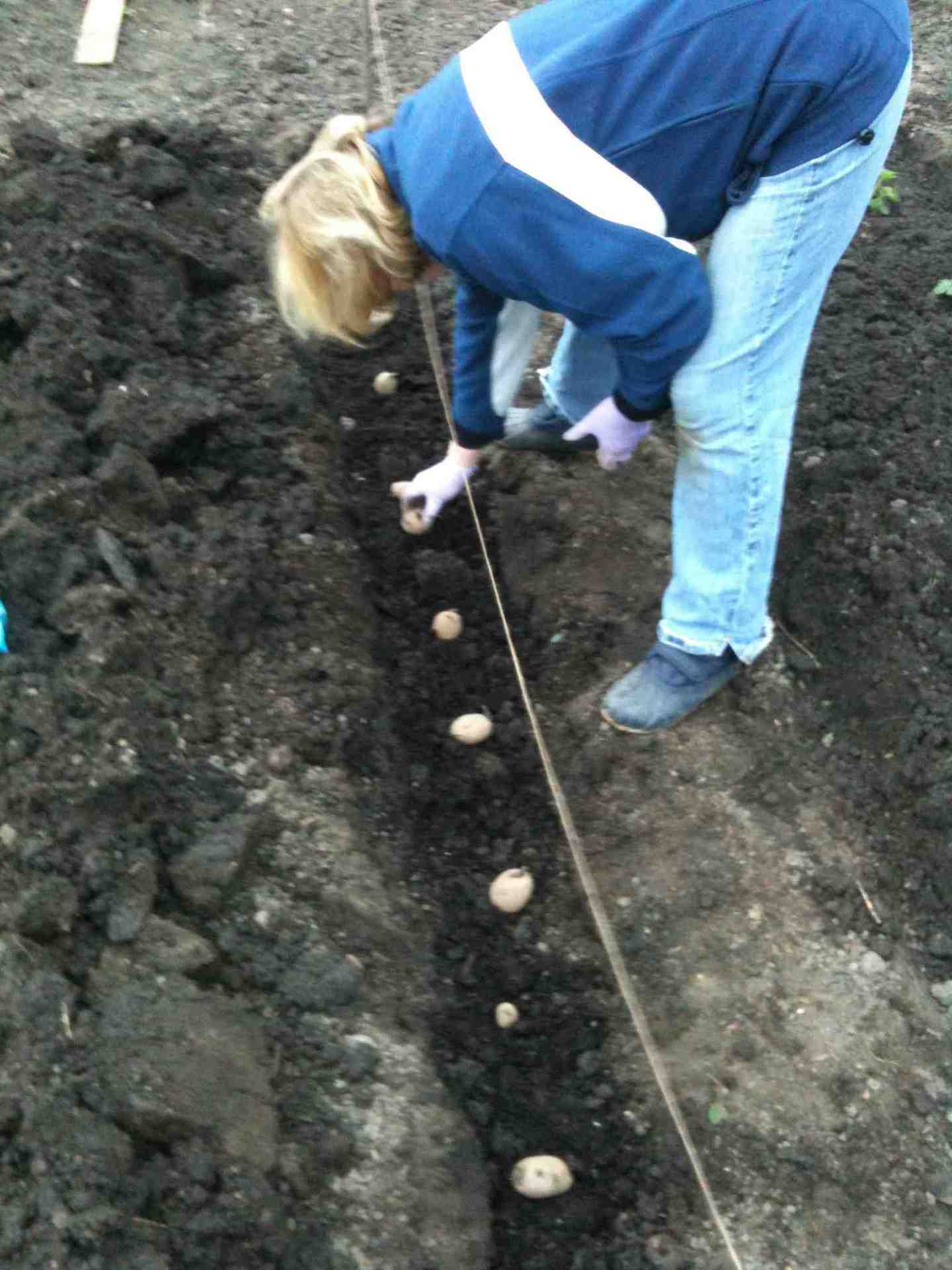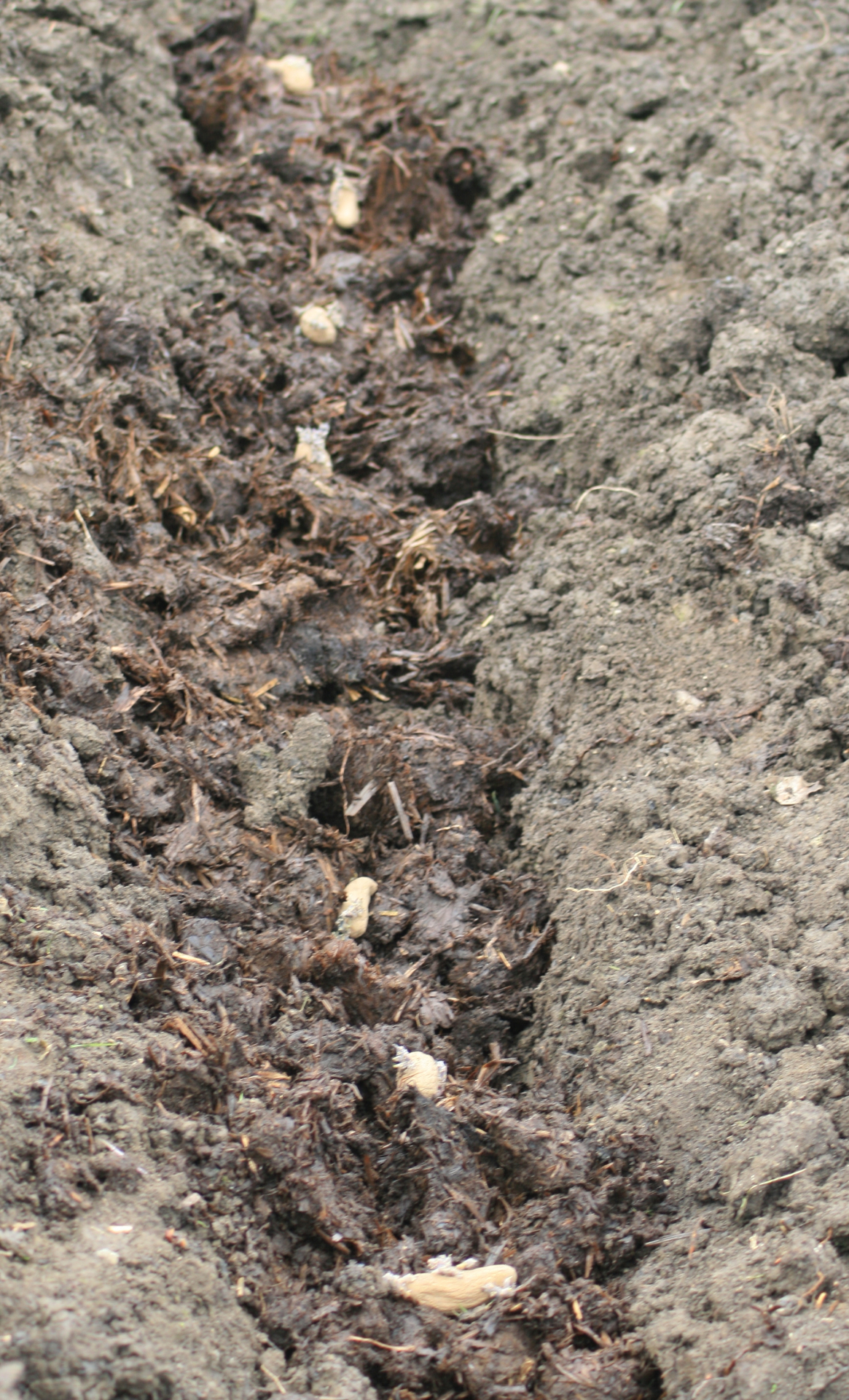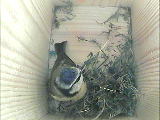Do have a look at my website - Feasting From Allotments
Growing Annual Herbs
for Culinary Use
Annual plants – grown from seed,
through flowering to seed in one season – then die. (borage, dill, coriander,
cilantro, basil, mustard, summer savory).
***
Borage - borago officinalis
This plant appears
regularly on my plot where I haven’t sown it as it can easily self-seed.
It is much loved by bees.
A couple of years
ago I left a large clump, growing in the middle of an area I was digging over
before winter, until the end. When I eventually pushed my fork under the plant
several mice ran out and disappeared into the undergrowth on a neighbour’s
plot. The mice had obviously made their summer home in its dense clump of
foliage.
Growing
Seeds can be sown in early spring under
cover or in late spring outdoors when the risk of frost has passed. It likes a
light, free-draining soil which is not too rich.
Thin seedlings once they are large enough to
handle or transplant if propagated in pots, trying not to disturb the long root
too much.
Harvesting
Pick the flowers just as they open. The
leaves picked young can be used fresh all season. The plant will die with the
first frosts.
Nutritional Value
Excellent source of – vitamins A and C
Useful Amounts of – potassium, iron and magnesium
Traces of – protein, fat, carbohydrate, sodium,
calcium, vitamin B6
Uses in the Kitchen
The flowers can be uses as a garnish in
cocktails, desserts and ice-cream.
The young leaves can be used in salads,
soups and in yoghurt.
It should be used sparingly
***
Dill - anethum graveolens
Dill looks a little like fennel but, has its
own distinctive flavour.
Growing
Seeds can be sown in early spring under
cover or in late spring outdoors when the risk of frost has passed. They like a
sunny, sheltered position in a well-drained soil.
Germination should take about 2 to 3 weeks
and as soon as the seedlings are large enough to handle, thin the young plants
allowing about 20cm, [8 inches]. As they don’t like being transplanted, discard
any seedlings you have weeded out.
Harvesting
To give a constant supply of young fresh
leaves it is a good idea to successionally sow. Once the plant flowers the
leaves no longer develop well.
If you are growing for the seeds, allow the
plant to flower. The seeds are ready for use when they have turned brown. Make
sure they have dried well before storing.
Nutritional Value
Excellent source of - Vitamins - A, C, folate, Minerals – iron,
manganese
Useful amounts of – Vitamins – riboflavin, niacin,
B6, Minerals – calcium, magnesium, potassium
Traces of - proteins, fat, carbohydrate, Vitamins – thiamine, pantothenic
acid, Minerals – phosphorus, sodium, zinc, copper.
Uses in the Kitchen
Dill is used more widely in Northern and
Eastern Europe in soups, salads, in dressings and with yoghurt. It is also used
to sprinkle over potatoes and in fish dishes.
 In the UK it is most familiar to us in Dill Pickles where the leaves are used to
give a distinctive flavour to pickled gherkins.
In the UK it is most familiar to us in Dill Pickles where the leaves are used to
give a distinctive flavour to pickled gherkins.
***
Coriander
and Cilantro - Coriandrum sativum
- what a
wonderful herb -or spice – depending on which part of the plant you are using
or why you would grow it . In the UK coriander will run almost straight away to
seed.
Growing
Seeds can be sown in early spring under
cover or in late spring outdoors when the risk of frost has passed. Germination
can take up to 3 weeks when sown outdoors and it is best sown where you want it
to grow on as it is likely to bolt if transplanted.
As soon as the seedlings are large enough to
handle thin, allowing 15cms or 6 inches between the plants. In dry weather you
should water regularly until the plants are well established. But, don’t
over-water. They don’t like heavy wet ground. The plants like a sunny position
out of the wind.
Cilantro -If you want to grow coriander
for the leaves, buy seeds called Cilantro. It is slower to run to seed.
- watch out for
fungi / moulds on the seeds in a damp year as they will turn your seeds black
and ruin your crop.
Harvesting
Harvest the
leaves while the plant is still low. When the cilantro grows its stalk the
leaves are fewer
Once the seeds
have formed and begin to turn brown, cut off the seed heads and hang them
up-side down in muslin or paper bags [not plastic] until the seeds fall off
The seeds dry
and store well and I always aim to have enough to last me until next season’s
crop. Store them in a cool dry place in airtight containers.
Use the leaves
fresh as long as possible but, it does freeze quite well. I chop them quite
finely then pack into ice-cube trays and fill each tray with water. When frozen
the cubes can be stored in plastic bags as used as necessary.
Nutritional
Value
Excellent source
of – vitamin A, K and C
Useful amounts
of – folate, pantothenic acid, riboflavin, B6and vitamin E, minerals - potassium, iron and manganese
Traces of - protein,
fat, carbohydrate, vitamins – thiamine, niacin, minerals – calcium, magnesium,
phosphorus, sodium, zinc, selenium.
Uses
in the Kitchen
Coriander is one
of the basic spices in Asian cooking and as a dedicated fan of Asian food I do
use a lot of it. Freshly crushed or finely ground spice is so much more
aromatic and zestful than bought ones. It is easy to germinate and grow.
Cilantro is an
indispensible ingredient in Mexican, Peruvian, Caribbean and Asian cooking. Use
it fresh as long as possible.
***
Basil – ocimum basilicum
A very fragrant
herb and an essential part of the Mediterranean kitchen but, also a favourite
in South-East Asia.
The most common type of basil is sweet basil
or Genovese basil; other types include purple basil (which is not as sweet as
common basil) and Lemon basil ( with a
slight lemon flavour).
 Growing
Growing
Basil is
half-hardy annual and although it should grow outdoors in a warm, well
protected area outdoors, I have not had any success with growing this herb
outside, even in the temperate south-west of England. I always grow mine in
pots [lots of, sown successionally] in my house.
I usually
start them off in my propagator – a few seeds sprinkled over damp compost in
pots and covered with a light sprinkling of compost or vermiculite.
They
should germinate in about a week when I remove them from the propagator and
place them on a sunny windowsill or under a plant light.
Thin the
young plants as soon as they are large enough to handle taking care to not
disturb the ones you intend to keep [ don’t transplant], and water regularly to
keep the compost damp but don’t overwater as the young plants are prone to fungal
diseases.
Pinch out
the flower buds as soon as they start to develop. This will encourage your
plants to branch and provide more leaves. Once the plants flower the leaf
production will slow.
Harvesting
Pick the
leaves fresh as you intend to use them once the plant is large enough that the
removal of a few leaves will not be fatal for the plant. If you like lots of
basil grow lots.
They can
be stored easily by placing the leaves into freezer bags and freezing.
Alternatively, chop roughly, pack the leaves into ice-cube trays which are then
filled with water and quick freeze. The frozen leaves can be used in sauces,
pesto, soups, etc but, fresh is always best.
Nutritional
Value
There is a carbohydrate and protein in basil
and a very little fibre.
Excellent source of Viatmin K
Useful Amounts of- Vitamin A, folate and C. Minerals - calcium, iron, magnesium, manganese
Traces of- Vitamins – riboflavin, niacin, thiamine,
pantothenic acid and E. Minerals- phosphorus, potassium and zinc.
Uses in the Kitchen
Fresh torn or crushed basil leaves on a
salad give a wonderful flavour. Chopped on top of sliced tomatoes with
mozzarella cheese and fresh crusty bread is a feast.
Basil is an essential ingredient in many
sauces and especially pesto.
When adding it to a cooked dish, stir in or
sprinkle over just before serving.
***
Mustard
– brassica juncea
Mustard is a brassica, related to cabbage,
sprouts, kale, etc.
It
can be grown as a salad leaf vegetable or, if allowed to flower and go to seed,
mustard seeds can be harvested and used as a spice.
Growing
If
you are planning to use the mustard a a salad leaf it is best sown
successionally so that you can harvest the young leaves when you want them.
Mustard seeds are often included in packets of mixed salad leaf seeds along
with sorrel, rocket, lamb’s lettuce, etc. But any type of must seed will do.
Sow
thinly in mid-spring by scattering on in shallow trenches. Harvest regularly
and resow several weeks before the first sowing is finished. Mustard can
continue to be sown until August.
If
growing mustard for its seeds, it can be sown a few weeks before the end of the
last frosts in shallow trenches in rows 15cm [6 inches] apart. As soon as the
seedlings are large enough to handle thin them to about 25cm [10 inches] apart.
Harvesting
As the mustard
flowers fade, they will form pods. When they start to turn brown it is time to
think of harvesting. Unless you want to be overrun with mustard seedlings in
the following year it is important to harvest them before the pods burst open
and scatter the seeds. At that stage you will also have lost your crop.
Harvest the pods
and hang them up in muslin or paper bags to allow they to finish drying when
the pods will burst open and release the seeds. You can then remove the seeds
from the dried pods store them for use or for sowing next year.
Nutritional
Value
Excellent source
of – fat [ mustard oil], protein, fibre, magnesium, iron
Useful amounts of –
Vitamin – B6, Minerals – calcium
Traces of –
Vitamin C
Uses
in the Kitchen
Mustard leaves used in salads or as a
vegetable
The seeds
[ yellow and black] are an essential ingredient of much Eastern cuisine.
The seeds are also used in Many European countries, particularly France
and the UK as a condiment and an essential ingredient in dressings, sauces in
pasta and savoury soufflés.
***
Summer
Savoury – satureja hortensis
This is a half hardy annual which is closely
related to the Winter Savoury –satureja Montana.They
have a very similar flavour.
Although, like Basil in that they are both
half-hardy annuals, I have been successful in propagating and growing Summer
Savoury outdoors in the south west of the UK.
It is a small shrubby herb which looks rather like
a thyme although, it has a reputation of tasting like sage. To my mind its peppery
flavour is more of a mixture of the two and I have found it easy to grow and
useful in the kitchen.
Growing
Although not a well know herb in the UK, it is easy
to buy the seeds from any good nursery or seed house.
It is said to repel black fly on broad beans if
planted beside them and it is suggested that they should be harvested and
cooked together which gives it its common name of ‘bean herb’
Sow the seeds in shallow trenches and cover lightly
in mid – spring [about April]. I have always sown in small pots in my
poly-tunnel then transplanted as a low border outdoors, each plant about 15-20cm[
6 – 8 inches] apart. They can also be grown in largish pots on the patio for
easy picking when you want to use the herb in the kitchen.
Harvesting
Pick the leaves fresh as you want to use them or
cut the short branches and hang them up to dry so that they can be used as a
dried herb in the winter months. Why not keep a potted plant of savoury on the
kitchen windowsill for use over the autumn and winter.
Nutritional Value

 Excellent source of – Vitamin A, B6 and C, Minerals
– iron, manganese, magnesium, calcium, copper,
Excellent source of – Vitamin A, B6 and C, Minerals
– iron, manganese, magnesium, calcium, copper,
Useful Amounts of – Protein, fat, carbohydrate, riboflavin, niacin, thiamine Minerals – zinc,
phosphorus
Traces of – sodium and selenium.
Uses in the Kitchen
Used in America, Canada and Europe as a herb to
cook in bean dishes, it is also useful in omelettes, salads, soups, etc.
Chervil – anthriscus cerefolium
Some
sources of information about chervil call it an annual herb while others refer
to it as a biennial –[ that is one which will propagate and grow ,producing
leaves in the first year then, flowering and running to seed in the second.
For
the purposes of this information and as a culinary herb I will include it with
my annual herbs.
If
you wish to grow it on for seed, it is best treated as a biennial.
It
is a relation of parsley and is sometimes referred to as French Parsley but, to
mind they taste nothing like each other as chervil as its soft, bright green
leaves have a much more delicate flavour – a little like aniseed. But, really,
chervil is its own flavour.I have come late to this herb but now, find it an
essential in my summer kitchen.
Growing
Chervil
likes a fertile moisture retaining soil – it really doesn’t like drying out and
must be watered in dry weather. It will also tolerate shadier areas in your
garden or allotment.
Sow
it where you intend it to grow by scattering the seed or in rows in mid to late
spring. Water well and don’t let the seedbed dry out. As soon as the seedlings
are large enough to handle, thin out the young plants to 20cm [8 inches] apart.
Don’t transplant the thinning – they don’t like being moved or transplanted.
You can also keep a pot on the kitchen windowsill although, for me a small pot
will not give me anything like enough. To keep a good supply going through the
season you can continue to sow until August.
Harvesting
The
leaves are best used freshly picked – pick just like parsley leaves. I have not
attempted to dry or freeze this herb as its flavour is so delicate I fear it
would be lost in the process. Chop the leaves roughly or just tear them apart
to add to a salad.
Nutritional
Value
Excellent
source of – Vitamins A, C, riboflavin, B6, Minerals – calcium, iron, manganese,
potassium, fibre
A
useful source of – Protein, carbohydrate, Vitamins – thiamine, niacin, Minerals
– copper, magnesium, phosphorus, selenium, zinc
 Traces
of – fat, sodium
Traces
of – fat, sodium
Uses
in the kitchen
Chervil
is one of the French basic groups of herbs [fresh of course!] ‘Fines Herbes’ used
in much French traditional cuisine. It includes chervil, chives, parsley and
tarragon.
I
love sprigs of herbs in my summer salads and chervil is one of my favourites.
 It
is wonderful in omelettes and soufflés and scattered freshly chopped over
cooked potatoes or vegetables.
It
is wonderful in omelettes and soufflés and scattered freshly chopped over
cooked potatoes or vegetables.
It
is not useful if cooked too long as it will lose its flavour very quickly.

 The ground is very wet after a few days of heavy rain although we really did need the rain. My ground dries out very quickly and sets into rock hard lumps so the rain was welcome. I did manage to get a piece dug ready for my spring sowing broad beans [Imperial Green Longpod] which are in pots in my poly-tunnel. I will plant them out in a week or so.
The ground is very wet after a few days of heavy rain although we really did need the rain. My ground dries out very quickly and sets into rock hard lumps so the rain was welcome. I did manage to get a piece dug ready for my spring sowing broad beans [Imperial Green Longpod] which are in pots in my poly-tunnel. I will plant them out in a week or so. My blue-tits continue to work on their nest in my nesting box. One of them stays there each night. I don't know if this makes it any more likely to choose this nest as the one they will lay in but I continue to be hopeful. At least I know they have not yet stated to lay eggs.
My blue-tits continue to work on their nest in my nesting box. One of them stays there each night. I don't know if this makes it any more likely to choose this nest as the one they will lay in but I continue to be hopeful. At least I know they have not yet stated to lay eggs.
















